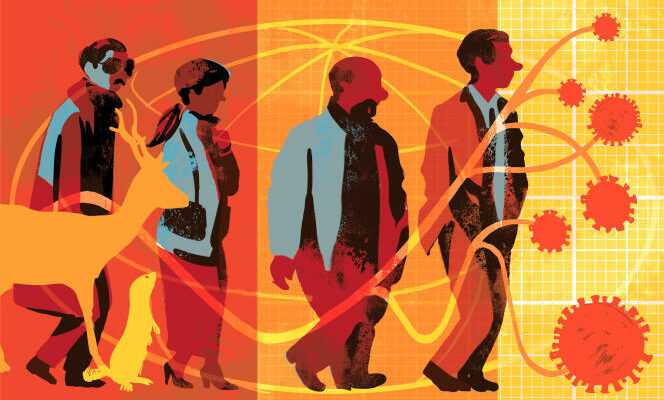Peter Markov is a medical epidemiologist and doctor of virology. He has studied the evolution of the hepatitis C virus, including the influence of colonial history and transatlantic slavery on the selection of viral genotypes currently in circulation. He worked in the Health Protection Agency, the British public health agency, then in the European Center for Disease Prevention and Control. He is now working at the Joint Research Center, the scientific and technical research center of the European Union, in Ispra (Italy). He recently co-authored, in the journal Nature Reviews Microbiologyan article denouncing the myth that the SARS-CoV-2 virus is evolving towards less virulence and alerting to the risk of emergence of new variants.
In your article, you criticize the use of the concept of endemicity. Why ?
This concept has been mobilized for rhetorical purposes to proclaim the end of the pandemic and the lifting of barrier measures. However, endemicity means that the virus circulates chronically in the population, not that it is without danger. The public health problem it poses depends both on the level of this circulation and the severity of the infection. An endemic virus has a very different impact if it infects 1% or 10% of the population. But even at low prevalence, some viruses pose a public health problem. This is the case with HIV or with the hepatitis C virus, the infection of which can in particular lead to liver cancer.
You also denounce the idea that SARS-CoV-2 would evolve towards a lesser virulence…
This is one of the persistent myths in virology. It starts from the premise that the less a virus kills, the more it survives in the population. In reality, many viruses are transmitted intensely before killing their hosts, because the severe forms of the disease and death occur late in the infection process. This is the case for the SARS-CoV-2 virus as for other viruses, such as the influenza virus or the HIV virus, for which several years separate contagion from the onset of symptoms. And, as with all living entities, selection pressure is exerted on the ability of the virus to reproduce, and therefore to be transmitted in the case of viruses.
The lesser severity of Omicron does not predict that of future variants
As long as the population is virus-free, transmission is favored by the increase in infectivity, hence the Alpha and Delta variants selected for this property at the start of the pandemic. On the other hand, once the virus has circulated in the population, herd immunity slows its spread and infectivity makes less difference between the variants. To continue to circulate, the virus must remove this brake by escaping the immunity directed against the previous variants. Hence the advantage given to Omicron by its escape mutations, which can re-infect people who have been infected by the previous variants. Severity is only a by-product of this evolution which is difficult to predict and the lesser severity of Omicron does not predict that of future variants. Nothing excludes that they are more pathogenic.
You have 41.34% of this article left to read. The following is for subscribers only.
